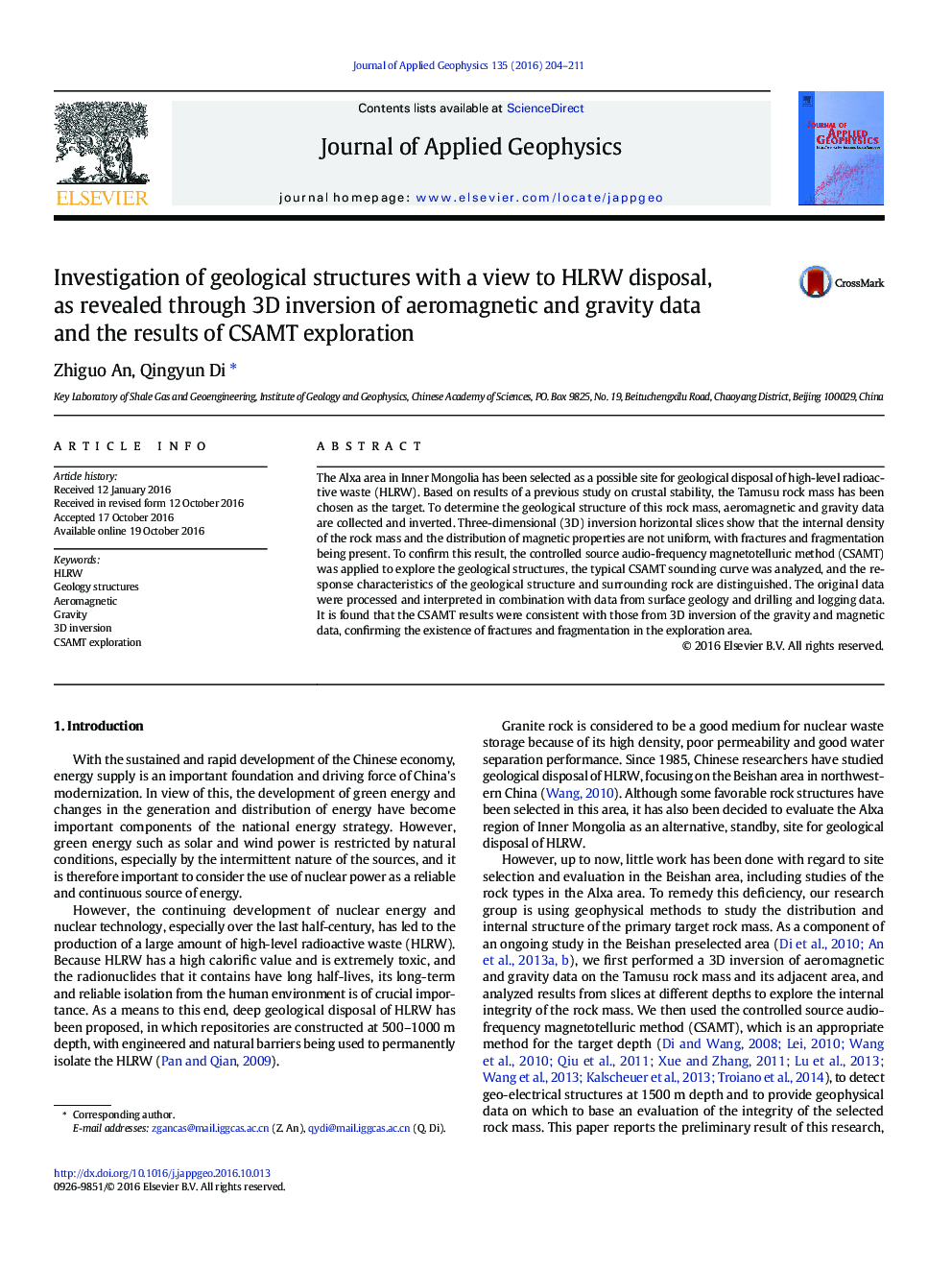| Article ID | Journal | Published Year | Pages | File Type |
|---|---|---|---|---|
| 4739703 | Journal of Applied Geophysics | 2016 | 8 Pages |
•We described the results obtained from geophysical exploration over HLRW preselected site.•We presented the initial findings from 3D gravity and aeromagnetic inversion results.•Taking advantage of the CSAMT result, detailed interpretation which verified the initial findings was given.•We discussed the implication of the geological structures observed at Tamusu.
The Alxa area in Inner Mongolia has been selected as a possible site for geological disposal of high-level radioactive waste (HLRW). Based on results of a previous study on crustal stability, the Tamusu rock mass has been chosen as the target. To determine the geological structure of this rock mass, aeromagnetic and gravity data are collected and inverted. Three-dimensional (3D) inversion horizontal slices show that the internal density of the rock mass and the distribution of magnetic properties are not uniform, with fractures and fragmentation being present. To confirm this result, the controlled source audio-frequency magnetotelluric method (CSAMT) was applied to explore the geological structures, the typical CSAMT sounding curve was analyzed, and the response characteristics of the geological structure and surrounding rock are distinguished. The original data were processed and interpreted in combination with data from surface geology and drilling and logging data. It is found that the CSAMT results were consistent with those from 3D inversion of the gravity and magnetic data, confirming the existence of fractures and fragmentation in the exploration area.
